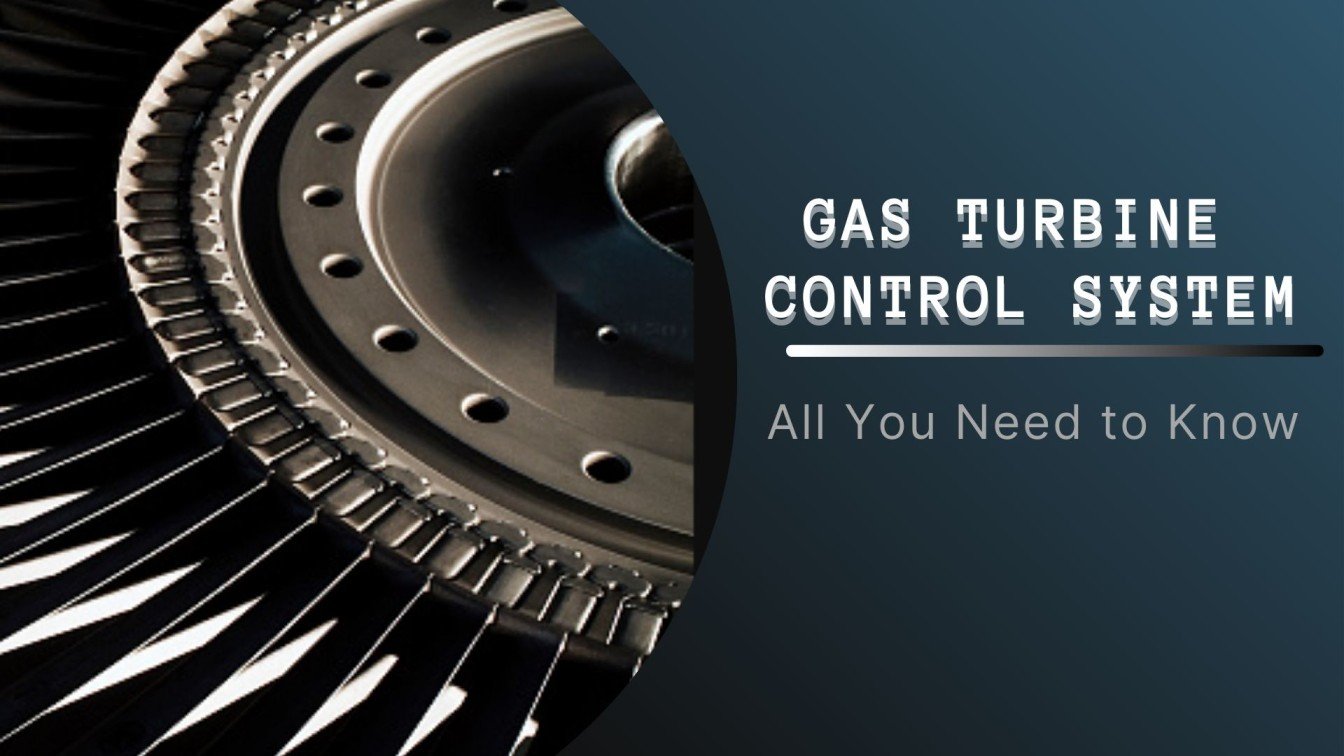Gas Turbine Control System: All you need to Know
Gas turbines have been used to generate power since the late 1930s. Gas turbines are one of the most common power generation systems today. They are a form of the internal combustion engine in which hot gases are produced when an air-fuel mixture is burned, spinning a turbine to generate electricity. Gas turbines get their name from the hot gas produced during fuel burning, not from the fuel itself. In this blog, we will look into gas turbine operation and turbine control systems.
How a Gas Turbine Works

- The compressor, the combustion chamber, and the turbine are the three basic sections of a gas turbine, all of which are positioned on the same shaft along with axial or centrifugal flow compressors. Because of their higher flow rates and efficiencies, axial flow compressors are more commonly used in power generation.
- Air is drawn in parallel to the axis of rotation and increasingly compressed as it travels through each stage of axial flow compressors, which are made up of many stages of rotating and stationary blades. The air is accelerated by the rotating blades and diffused by the stators, which increases pressure and decreases volume. Despite the fact that no heat is added, the temperature rises due to the compression of the air.
- Initial momentum is provided to the turbine rotor by an external motor, static frequency converter, or the generator itself since the compressor must achieve a particular speed before the combustion process is continuous – or self-sustaining. Before fuel can be supplied and ignition can occur, the compressor must be smoothly increased to attain firing speed.
- Turbine speeds range from 1,000 to 12,000 revolutions per minute, depending on the manufacturer and design. One or more spark plugs are responsible for the initial ignition. The power output is enough to run the compressor once the turbine reaches self-sustaining speed – above 50% of maximum speed, combustion is continuous, and the starting mechanism may be disconnected.
- Between 2013 and 2020, hundreds of gas turbines (GTs) that were erected between 1990 and 2005 will be due for an update or replacement of their original equipment manufacturer controls. In the same time frame, turbines with even earlier origins will be ready for their second control modification.
- Many OEM-supplied gas turbine owners and operators are now faced with the dilemma of how best to modernize their turbine control systems, and they should be aware that there are new options available in the form of open control systems provided by a third party. These solutions give the owner/operator the tools and data they need to become a self-maintainer who can troubleshoot, tune, repair, and upgrade their turbines without having to rely on the turbine maker.
- Furthermore, the third-party open system platform is typically found controlling the plant’s other processes in addition to the gas turbine application. In the same time frame, turbines with even earlier origins will be ready for their second control modification.
- Many OEM-supplied gas turbine owners and operators are now faced with the dilemma of how best to modernize their turbine control systems, and they should be aware that there are new options available in the form of open control systems provided by a third party.
- These solutions give the operator the tools and data they need to become a self-maintainer who can troubleshoot, tune, repair, and upgrade their turbines without having to rely on the turbine maker.
- The third-party open system platform is typically found controlling the plant’s other processes in addition to the gas turbine application. This enables the user to combine and consolidate the user’s overall control, protection, and communication infrastructures, resulting in considerable plant performance and cost savings.
Gas Turbine Control System
- The gas turbine generator is a compressor, turbine, and generator all rolled into one. First and foremost, the compressor compresses the air intake. A fuel combustion process will heat the compressed air. This hot, high-pressure air will expand in the turbine, causing the turbine to rotate and generate thrust. This thrust force is employed to operate the electrical generator as well as the compressor. After then, the electrical generator generates electricity or electrical power for future usage.
- The gas turbine generator system is divided into three subsystems: the lubrication oil system, the fuel gas system, and the fire and gas detection and suppression system. The objective of the lubricating oil system is to grease all of the bearings in the turbine. The heat of the lube oil returning from the turbine bearing is dissipated by a lube oil cooler in this lube oil system. The temperature regulator and pressure regulator valve regulate the lubricating oil’s temperature and pressure.
- The objective of the fuel system is to regulate the fuel supply in order to achieve efficient combustion in the combustion process. Before being used in the combustion process, the fuel supply is filtered and controlled.
- The fire and gas detection and suppression system in the turbine skid enclosure is designed to detect any flame or gas accumulation. If a fire breaks out in the skid enclosure, this system will saturate the area with CO2.
Gas Turbine Generator Control and Safety System
In general, the gas turbine vendor provides a comprehensive gas turbine generator package, which includes all field instruments, fire and gas detectors, and a dedicated PLC for the GTG control and safety system.
Turbine temperature, exhaust temperature, lubricating oil temperature, fuel gas pressure, air intake pressure, fuel gas flow, enclosure flame detection, enclosure gas detection, and other process variables must be monitored and managed by its own PLC.
Several control functions, including start-up and shutdown control, must also be performed by its specific PLC. To acquire a better grasp of the general gas turbine generator control system, look at the image below. In general, the gas turbine vendor provides a comprehensive gas turbine generator package, which includes all field instruments, fire and gas detectors, and a dedicated PLC for the GTG control and safety system.
Turbine temperature, exhaust temperature, lubricating oil temperature, fuel gas pressure, air intake pressure, fuel gas flow, enclosure flame detection, enclosure gas detection, and other process variables must be monitored and managed by its own PLC.
Several control functions, including start-up and shutdown control, must also be performed by its specific PLC. To acquire a better grasp of the general gas turbine generator control system, look at the image below.
GE Mark VIe Turbine Control System
A redundant control system that allows for online repair is crucial for firms that rely on decades of unbroken machine service. GE’s distributed control solutions are built to provide the high availability and flexibility that today’s most demanding applications require. One of the greatest detriments to productivity and profitability is downtime. It is critical to have a system in place that guarantees maximum system reliability and availability at all times.
The Mark VIe control system is a versatile platform that can be used in a variety of applications. It supports simplex, dual, and triple-redundant systems with high-speed, networked input/output (I/O). Ethernet-based I/O may be simply spread across the plant for all balance-of-plant applications. For I/O, controllers, and supervisory interfaces to operator and maintenance stations, as well as third-party systems, industry-standard Ethernet connections are used.
IS420ESWBH2A, IS220PTCCH1B are some components belonging to the Mark VI or VIe series. For programming, configuring, trending, and analyzing diagnostics, the control software package is utilized with Mark VIe controllers and related systems. The Distributed Control Solution (DCS) function library speeds up the building of plant application logic balance. For successful control system equipment management, the system offers quality, time-coherent data in the controllers and at the plant level throughout the runtime.

















